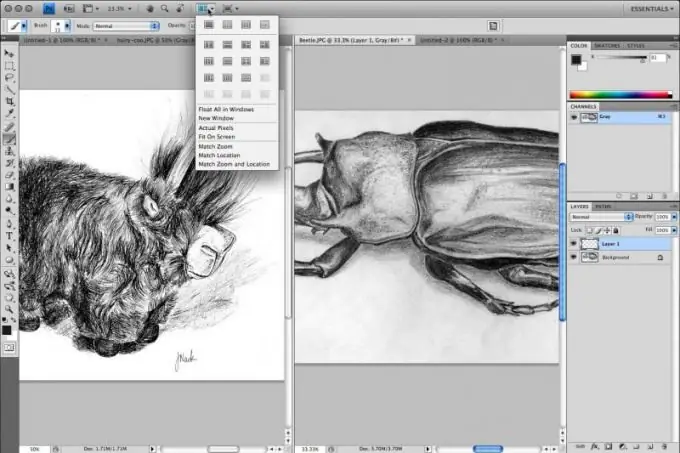The available tools in Photoshop are located by default in a floating panel on the left side of the screen. Some of them, which have a black triangle on their icon, include varieties. When you select a tool at the top of the program window, under the menu bar, the tool's options panel appears.

Necessary
Computer with installed "Photoshop" and Internet access
Instructions
Step 1
Look at the tool icon on the panel - this is often enough to understand its purpose. You just need to logically correctly interpret the images on the panel. The icons have a standardized look and feel and are probably familiar to you. For example, a dotted rectangle means a selection of an area, a drop means a blur, an eyedropper means a tool of the same name for working with color, a magnifying glass means an increase, etc. As you can see, almost all images on the panel are easy to "read" by a user who, in one way or another, is familiar with computer symbols.
Step 2
Pay attention to the arrangement of the toolbar items. They are divided into groups from top to bottom: selection, cropping, measuring, retouching, drawing, typing, navigation. This grouping will also help you determine the purpose of the tool, even if the icon is unfamiliar to you.
Step 3
Hover over a tool to see a tooltip with a name and a key that cycles through tools from the same group. To use keyboard shortcuts, press Shift and the letter indicated in the tooltip. For example, to select a sponge, you must press Shift + O three times, because the sponge is the third in a group of similar tools. The pop-up title will make the panel much easier to use. Gradually, you will remember the names themselves, and the hotkeys for calling the tool you need.
Step 4
For a more detailed acquaintance with the tools of "Photoshop" use the help. You can call it in the program itself by pressing the F1 key or by opening the corresponding page on the official website of the program developer. Help is available in most languages today. In it you will find a description of the functions of the tools, and examples of their use, and methods of fine tuning for yourself.
Step 5
If you still run into difficulties after the steps described, refer to the help of numerous sites, forums, podcasts and video courses. There are so many users of Photoshop that one can hope for detailed coverage of all issues and nuances on the Internet. Often, reviews and articles by specific people are much more informative and accessible than standard references. On the forum, you can directly ask your question and get a qualified answer. Video tutorials in the most visual form will tell you step by step about the various aspects of the editor.
Step 6
Despite the abundance of auxiliary tools, you can independently figure out the variety of Photoshop tools and in a simple empirical way, choosing one of the tools on the panel and trying to use it. This way, perhaps, is suitable for initial acquaintance and will facilitate further use of the graphic editor.






